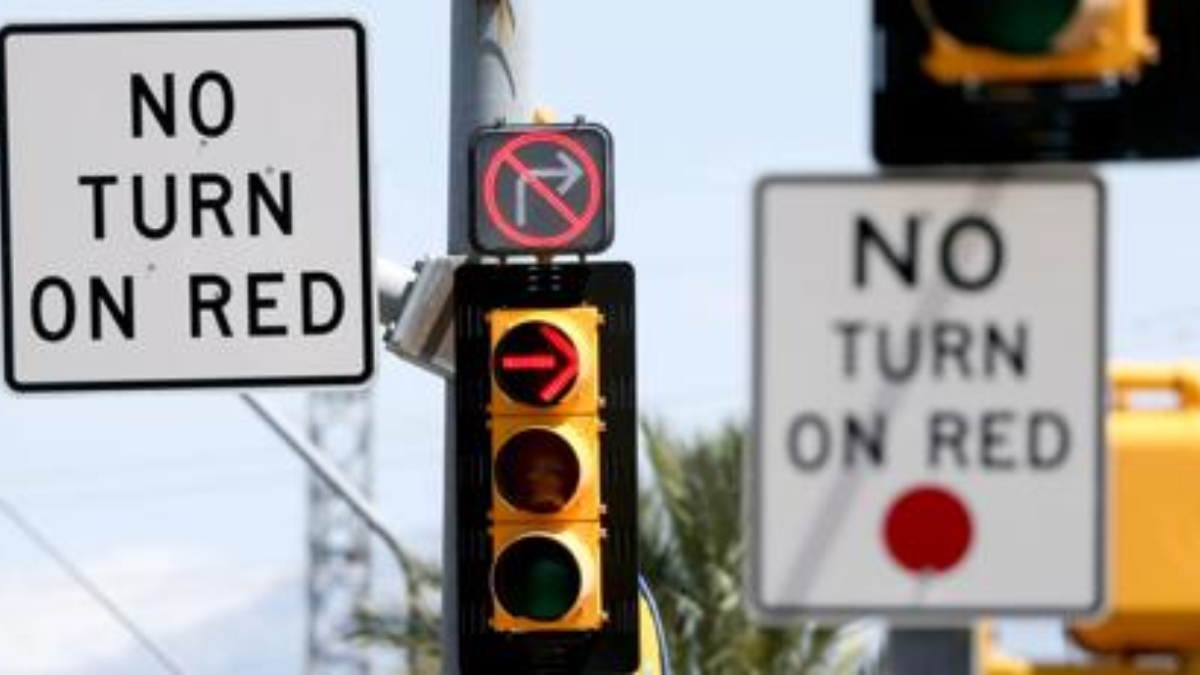CHICAGO, IL — In response to increasing pedestrian and cyclist fatalities, Chicago city officials are deliberating the implementation of restrictions on right turns at red lights. This consideration aligns with a broader national reevaluation of traffic policies aimed at enhancing road safety.
The initiative gained momentum following Mayor Brandon Johnson’s transition plan, which highlighted the need to “restrict right turns on red” as part of a comprehensive strategy to improve pedestrian safety.
While specific details have yet to be finalized, the proposal reflects a growing awareness of the risks associated with right-on-red maneuvers, particularly in densely populated urban areas.
Historical Context and National Trends
The practice of allowing right turns on red was widely adopted in the United States during the 1970s, primarily as a fuel-saving measure during the energy crisis. However, recent studies and safety reports have prompted cities to reconsider this policy.
Washington, D.C., for instance, approved a citywide ban on right turns at red lights, set to take effect in 2025. Similarly, cities like San Francisco, Los Angeles, and Seattle are exploring or have implemented restrictions in specific areas.
These policy shifts are driven by alarming statistics. According to the Governors Highway Safety Association, over 7,500 pedestrians were killed by motor vehicles in 2022, marking the highest number since 1981.
While not all these fatalities are directly linked to right-on-red turns, the maneuver has been identified as a contributing factor in numerous accidents, particularly involving larger vehicles with significant blind spots.
Local Incidents Highlighting the Issue
In Chicago, personal accounts have underscored the dangers of right turns on red. Sophee Langerman, a 26-year-old cyclist, recounted an incident where a car turning right on red struck her bicycle as she was crossing the street.
Although she escaped serious injury, the event emphasized the potential hazards pedestrians and cyclists face at intersections.
Such incidents have fueled public discourse on the need for stricter traffic regulations to protect vulnerable road users. Advocacy groups argue that eliminating the option for drivers to turn right on red would reduce conflicts at intersections and enhance overall safety.

Arguments For and Against the Ban
Proponents of restricting right turns on red argue that:
- Enhanced Pedestrian Safety: Prohibiting the maneuver can reduce the likelihood of collisions between vehicles and pedestrians or cyclists.
- Improved Traffic Predictability: Removing the option for right turns on red can lead to more predictable traffic patterns, benefiting all road users.
- Alignment with Vision Zero Goals: The policy supports Chicago’s commitment to the Vision Zero initiative, aiming to eliminate traffic fatalities.
Opponents, however, raise concerns that:
- Increased Traffic Congestion: Banning right turns on red could lead to longer wait times at intersections, potentially exacerbating traffic delays.
- Limited Impact on Safety: Some studies suggest that right-on-red maneuvers account for a small percentage of pedestrian fatalities, questioning the efficacy of a blanket ban.
- Driver Convenience: The ability to turn right on red is seen by many drivers as a convenience that aids in efficient travel.
Jay Beeber, executive director for policy at the National Motorists Association, contends that the assumption that banning right turns on red will significantly enhance safety is a “fallacy.” He cites data indicating that such turns account for a minimal number of pedestrian deaths.
Implementation Considerations
Should Chicago proceed with restricting right turns on red, the city would need to address several logistical aspects:
- Signage: Clear and consistent signage would be essential to inform drivers of the new restrictions at affected intersections.
- Public Education: Awareness campaigns would be necessary to educate both residents and visitors about the changes to traffic laws.
- Enforcement: Ensuring compliance would require coordination with law enforcement agencies, potentially involving the use of red-light cameras.
Currently, Illinois law permits right turns on red after a complete stop, unless signage indicates otherwise. Any changes to this policy would necessitate updates to existing traffic control measures and enforcement protocols.
Conclusion
As Chicago grapples with rising pedestrian fatalities and seeks to enhance road safety, the consideration of restricting right turns on red represents a significant policy deliberation.
Balancing the benefits of improved pedestrian protection against potential traffic flow disruptions will be central to the city’s decision-making process.
Engaging with community stakeholders, analyzing data from other municipalities, and carefully planning implementation strategies will be crucial steps in determining the viability and effectiveness of such a measure.
For more information on traffic safety policies and initiatives in Chicago, visit the official Chicago Department of Transportation website:
👉 https://www.chicago.gov/city/en/depts/cdot.html
Disclaimer – Our team has carefully fact-checked this article to make sure it’s accurate and free from any misinformation. We’re dedicated to keeping our content honest and reliable for our readers.
